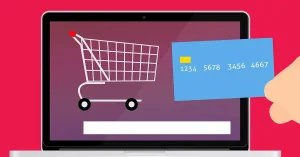After all of last year's troubles; Covid-19, deaths, stay-at-home orders, quarantines, people losing their jobs, some having to close their businesses, on top of a very contentious presidential race, still we are the phoenixes who rise from the ashes. We are going into 2021 with high hopes. We have a new president in America who is promising to make things better, to bring us back together, something we desperately need. There is now a vaccine for Covid-19, with experts predicting great results.
For those of you who are business owners who survived 2020, and for anyone just starting a new business, the following tips for making your small business profitable in 2021, will offer you even more hope for a much better year:
- Focus on building lifelong relationships--Putting people first is the best way you can invest in your business. Strong relationships are like Miracle-Gro for a small business. To quote the legendary American auto executive Lee Iacocca: “Business, after all, is nothing more than a bunch of human relationships.”One reason why it’s so vital to invest in real, meaningful relationships with customers/clients is that consumer trust is at an all-time low. Data shows that 55% of customers trust the companies they buy from less than they used to, and 69% of customers state that they don’t trust advertisements.Add this to the fact that the cost of customer acquisition has risen more than 50% over the last five years. The bottom line is that there is more competition than ever, and more ads and products competing for our attention.But you can use this to your advantage. If 81% of customers trust family and friends over advice from a business, then at least try to treat your customers like family. Find ways to make your customers feel valued, and demonstrate that you are interested in their experience beyond the “order confirmation” page.
Sometimes, it can be as simple as making sure a customer feels heard. 2020 was a tough year for everyone; investing in relationships can look like basic listening and empathy. Indeed, studies have highlighted the vital importance of listening as a sales tool.
- Social media is one of the most critical tools in your arsenal--In case you needed reminding, social media is still one of the most important tools that you have at your disposal as a business owner, with 52% of new brand discovery happening on public social media feeds. More and more advertisers are looking to paid social media ads as their bread and butter. Annual spending on social ads is increasing every year and expected to hit over $50 billion in 2021. Paid social ads are the No. 4-way consumers find out about new products, trailing behind only word-of-mouth, TV ads, and search engines. When you consider that 31% of 16–24 years olds are finding out about new products through paid social ads, it’s clear that younger consumers who are gaining buying power will justify even more investment in social media advertising.It’s not just ads that give you exposure on social media. On Instagram, 60% of users report that they have discovered a product on another person’s profile. Direct relationships with influencers will help to drive sales and business. Influencer marketing is a sure bet, with 89% of marketing professionals ranking it as a comparable or better return-on-investment than other marketing streams.
The importance of brand visibility on social media illustrates another reason why identifying your core demographic is so important. Getting your product into the hands of people for whom it is a strong lifestyle fit or connecting with clients who will be open to sharing their experiences will create more genuine interest and exposure on social media.
- Reinvest in your brand--In today’s economy, proper branding is the bedrock of a successful business. But as long as we’re talking about investing here, how do you even measure the value of a brand?Experts often consider “brand value” to be the perceived strength of a company's name, image, and reputation, and thus as part of the “intangible assets” of a business. Based on this framework, it’s been estimated that the strength of brands can account for up to 20% of the total value of companies trading on the S&P 500.While that might be hard to wrap your mind around, consider a well-known brand like Starbucks. They innovated by bringing better quality coffee to the world, but there is so much more to the Starbucks brand. What’s good coffee without the red holiday cups, the green mermaid, the annual revival of the pumpkin spice lattes? Starbucks as a brand isn’t any one of those things, but all of them, plus the intangible feelings they evoke.
It’s clear that investing in your brand has some of the highest potentials for return-on-investment, but what does that look like?
Here are some questions to get you started on assessing your brands for areas that need a little extra help:
- Consider your brand aesthetics for strength and weakness. Is your branding recognizably you? Are there design areas that have been neglected?
- Does your brand convey authenticity? This is one of the most important things that customers look for, with 86% of consumers stating that they value authenticity in the brands they support.
- What feelings and ideas would you hope to evoke for your customers? How can you convey this through your brand?
- Do you have unified aesthetics throughout your social media and larger branding? Consistency is key: studies found that a consistent presentation of a brand raised revenue by 33%.
- Does your branding distinguish you from competitors or others in your sector? What sets you apart from the crowd and is this being successfully conveyed in your branding?
Once you’ve explored those questions, look for actionable ways to reinvest in your business by addressing any areas in which your branding might be lacking. This might mean hiring designers or branding consultants for a rebrand, or dedicating resources to training team members on how to effectively curate the brand identity through meaningful social media content. The steps you take are up to you, so long as you recognize the value in reinvesting in the strength of your brand.





















Add comment